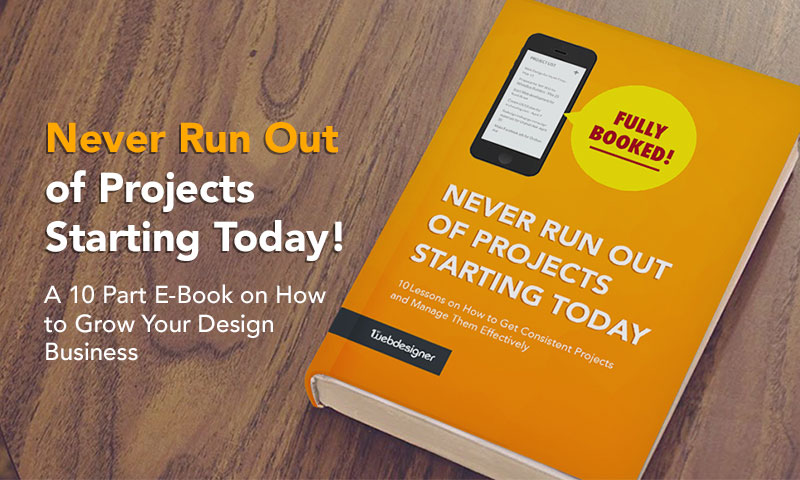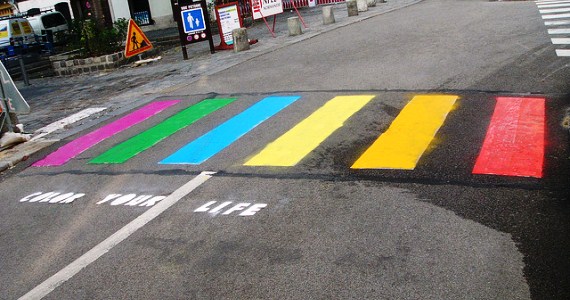Learning is constant. As web design professionals, you have to be constantly in the know about the latest trends and technologies in web design. Aside from those skills, you also need to develop other aspects of your life in order to achieve a good work-life balance in order to succeed.

That is why you might be surprised that a lot of these books in our list don’t just focus about web design, but also about business, self-improvement, and more.
Table of Contents:
50 Best Web Design Books You Should Read
Here is our list of the best web design books from 2016 to draw inspiration as well as learn important principles from. You might have read some of them while others might be new to you. Pick one or a few of them from the list, sit in your favorite chair, or go to your own private space, and get ready to learn and be inspired.
1. Steal like an Artist: 10 Things Nobody Told You about Being Creative
This is a simple and quick read about getting inspiration and coming up with ideas. The book also tells you that inspiration is everywhere and creativity is for everyone, not just for the genius or multi-talented. It says that creativity doesn’t necessarily mean being original, but a combination and collaboration of existing ideas and turning them into novel forms.
2. Don’t Make Me Think: A Common Sense Approach to Web Usability
Steve Krug tackles web usability and the interaction between humans and computers, stating that a website should allow users to accomplish what they want to do as easily and directly as possible. He also gives very helpful tips how a simple tweak can enhance a website’s usability.
3. LinchPin: Are You Indispensable?
A linchpin, according to Seth Godin, is someone in an organization who is indispensable, valuable, and irreplaceable. This book teaches principles and ideas how to become a linchpin by becoming an artist who does emotional work. By emotional work, he explains, is work that matters to you, work that you are willing to sacrifice all other alternatives. When you do this, you become passionate and accountable to the choice you made.
4. Where Good Ideas Come from
Steven Johnson states that all useful inventions are good ideas. Then, he uses them to stimulate his readers’ minds by asking where these good ideas come from and what kind of environment breeds them. He identifies seven key patterns that result in genuine innovation. What’s interesting is his section on errors which lead to accidental innovations and inventions, such as the computer. One brilliant takeaway was his reminder about “being right keeps you in place, and being wrong forces us to explore.”
5. Neuro Web Design: What Makes Them Click?
Susan Weinschenk talks about how various website features affect the user’s brain. She stated that our buying decision is greatly influenced by our unconscious – based on our emotions and automatic triggers. This insight greatly helps a web designer how they should design the website, and how they should combine and incorporate all other features that will influence the consumers’ unconscious and increase conversion.
6. Everything I Know
Paul Jarvis needs no introduction in our 1WD community, and we know that his ideas are golden nuggets not only to web designers but to almost everyone. The book reflects his personality as he combines different interesting anecdotes in his freelancing career with practical tips and ideas to help you conquer your fear and reach your highest potential not only as a person but also as a web design professional. He also challenges his readers to embrace vulnerability, be true to yourself, and settle for nothing less.
7. Start with Why: How Great Leaders Inspire Everyone to Take Action
It’s not really about web design, but about leadership. Simon Sinek answers the question why some people and organizations more influential, innovative, and profitable than others. He used several examples of people who stand out – the Wright brothers, Steve Jobs, and Martin Luther King were just a few. They are no different from others, nor are their ideas, but why did they stand out? One reason Sinek gave was their ability to inspire and motivate others. If you want to stand out as a web designer, this is a must read for you.
8. Mobile Design Book
This is a book by designers for designers. If you are also into mobile app development, then this is a good read. The book talks about mobile design principles that make apps successful. it’s not limited to operating systems, as web design is evolving, we’re having responsive design, not an option but a must, principles in the book will help you understand how to design websites for smaller screens
9. Design for Hackers: Reverse Engineering Beauty
A comprehensive guide about design principles and elements, from the purpose of design to color. David Kadavy used “hacker” as a reference to a “renegade group of entrepreneurial-minded people who are changing how we work, live, and interact. He adds that a hacker strives to learn in order to achieve his vision, is curious, and is entrepreneurial, just as we often encourage members of the 1WD community.
10. Hooked: How to Build Habit-Forming Products
One of the goals web designers want to achieve for their clients is to increase website conversion. In this book, Nir Eyal helps you achieve that by teaching you to look at underlying patterns in technology and how they are utilized to hook us. Once you become aware of these patterns, you can incorporate them into your design to enhance user experience and increase conversion.
11. Choose Yourself
How often have you made mistakes as a web designer? Mistakes are inevitable, and they are necessary. When it comes to mistakes, James Altucher is no stranger to them, using them as examples in this book to encourage his readers that these are normal and feeling like a failure at some point is also normal. However, when you begin to choose yourself for success, when you’re honest and open about the real you and your authentic passions, you jumpstart your success.
12. The Smashing Book #4 – New Perspectives on Web Design (Smashing Special eBooks)
If it’s from Smashing Magazine, it must be something good, right? Right. This fourth eBook installment talks about the mistakes most websites make and a solution for each of them. The content is easy to understand and provides priceless input about web design perspectives.
13. The Design of Everyday Things: Revised and Expanded Edition
This is a very old book written 25 years ago, but its content and principles remain relevant even until today. Don Norman talks about the relationship between design and human interaction. He also gives important lessons on the concepts of discoverability, affordance, signifiers, feedbacks, mappings and constraints.
14. Designing Web Interfaces: Principles and Patterns for Rich Interactions
This book provides information how to create great user experiences. Bill Scott and Theresa Neil were instrumental in designing UX for Yahoo and Netflix for years, so they know what they are talking about when they say UX. Here, they present more than 75 design patterns for building web interfaces that provide rich interaction. So if you’re looking for practical tips or just inspiration, you can start with this book.
15. The Principles of Beautiful Web Design
This book is another easy read and is ideal for those who are starting out as web designers. On the other hand, it can serve as a refresher on the basics of web design with topics that tackle color, typography, imagery, and texture. It also includes a lot of examples to make each point easier to understand and apply.
16. Creative Workshop: 80 Challenges to Sharpen Your Design Skills
Running out of inspiration? Creative workshop is full of exercises for practice and exploration to help you discover which processes work best for you. It is perfect for budding designers as well as for those who’ve been in the industry for a long time. Design agencies can use this to provide a challenge for the team.
17. Exceptional Service, Exceptional Profit: The Secrets of Building a Five-Star Customer Service Organization
As we often say here on 1WD, you are not just a web designer, but also an entrepreneur. This mindset is very important if you want to succeed and last in the industry. As a web designer, your clients are important, especially their loyalty. Why? Because loyal customers are less sensitive to price competition, more forgiving of small glitches, and, ultimately, become “walking billboards” who will happily promote your brand.
18. Adapt: Why Success Always Starts with Failure
Tim Harford boldly declares that there is no such thing as ready-made solutions. He said that even expert opinion isn’t enough to help you tackle your problems. In short, we have to re-learn everything we know about solving problems – we need to ADAPT. This book tackles different issues we face in the present world and explains the necessary ingredients for turning failure into success. If you want to survive and prosper not only as a web designer, but in everything, this is a must-read.
19. A Practical Guide to Designing for the Web
Already a popular figure in the web community, Mark Boulton created a no-nonsense guide for designing websites using the principles of graphic design. Boulton explains the academics of typography, layout, colour theory and grids. For each theory he shows when and how this applies to the web, and even when to be crazy and break the rules to make it even better. Just make sure you learn the rules before you break them.
20. Universal Principles of Design
This is a great reference book written by William Lidwell. It is accompanied by images and explanations to help you better understand a lot of design concepts and principles, from the 80/20 rule to 100 different design concepts. The book has been translated to 16 languages.
21. HTML and CSS: Design and Build Websites
Most books about CSS and HTML are boring, even to web design professionals. Jon Duckett takes a fresh approach to make the book interesting without watering down the essential information you need to know about HTML and CSS. This is a good investment for those who really want to know about coding.
22. The Elements of Typographic Style
Want to know more about typography? This book by renowned typographer Robert Bringhurst gives you more insight to the beautiful art of typography. He explains the history and theory of typography along with practical examples. He also introduces new innovations and techniques in font technology, making this a must read for anyone who wants to integrate beautiful typefaces to their websites.
23. Responsive Design with WordPress
This book by Joe Casabona is for those who are trying to learn how to create repsonsive themes and plugins. A good read for those who are learning WordPress for the first time.
24. Bulletproof Web Design
Dan Cederholm, the author of Web Standard Solutions, brings yet another easy-to-read book on web design problems and offering ways how to solve them. Then, he delves deeper by pointing out the weaknesses and strengths of each solution, and offers a solution that follows the best practices. If there is no clear-cut solution to a certain problem, he candidly tells his readers and allows them to decide for themselves.
25. The Laws of Simplicity
John Maeda writes in the premise that “simplicity is sanity.” He explains the 10 principles of simplicity which applies to almost any aspect of life, especially to product design. He advocates few buttons, few features, and few distractions while providing practical solutions and strategies to optimize the power of simplicity.
26. Good Strategy, Bad Strategy
If you have or are thinking to have a web design agency, this is a book to help you identify what good strategy is. The book says that most organizations don’t have good strategy because, in the first place, they don’t have one. Instead, most organizations have visions, or mistake financial goals for strategy, or have a hodge podge of conflicting policies and actions.
27. Nudge: Improving Decisions about Health, Wealth, and Happiness
The book title says it all. From time to time, each of us needs a little nudge to make wise and better decisions. You might think that the book is irrelevant to you as a web designer, but you’ll be surprised to find that there’s more to it to help you as a web design professional.
28. The Tipping Point
This is another book that is not directly related to web design, but will surely broaden your perspective as a person and also great lessons you can apply as a web designer. One of them, as the title suggests, is how little things make a difference. Malcolm Gladwell also discusses how things become very difficult and reach a tipping point, but suddenly things turn around and start taking off.
29. Rework
Rework has received both good and bad reviews and both camps give “candid” reviews about the book. Reviews aside, the book draws some real-life experiences from the group that created Basecamp. They talk about changing how businesses are run and the tools they use to achieve the work. It also emphasizes that you can basically start a business by maximizing free tools available on the Web. A must-read if you’re looome tips about building your business.
30. Made to Stick
Ideas come and go but there are some ideas stay with us for a long time. Why do these ideas stick? This is the question asked by Chip and Dan Heath in their book. They continue to explore the idea how to make ideas stick in people’s consciousness. This is the same question web professionals, social media experts, and business owners ask themselves. This is the right book to find the answer to such questions.
31. Rocket Surgery Made Easy
This is another book by Steve Krug and some sort of a follow-up for his Don’t Make Think book. Here, Steve Krug discusses how to test any design, find the most important problems, and provide the easiest solution for that problem. It encourages teams to test early and regularly so they can spot and fix the problem immediately while it is still manageable.
32. 100 Things Every Designer Should Know about People
Why do we design? This is the question that Susan Weinschenk tries to build upon in this book. She explains the real reason why we do what we do as web designers. That is to elicit response from people whether it is to buy more products, subscribe to an email, or read an article. She also explains how people see, feel, hear, and think as opposed to how designers undergo the same thoughts and processes.
33. Content Strategy for the Web
Content is king and good design with poor content makes a bad website. Furthermore, better content means better business. If you want to learn more how to create good content, this book offers a step-by-step of the production, process, implementation, and maintenance of your content.
34. Winning without Losing
The authors discuss the most common paradox of our times – working in the comforts of your home with just a click away, but working longer hours than necessary. They show us how to build a business and turn it into something sustainable and widely recognized while having a happy personal life on the other side. A very practical book which helps you identify and get rid of things that waste your time.
35. Selling the Invisible: A Field Guide to Modern Marketing
The book talks about the shift of the American economy from being a manufacturing one to becoming service-oriented. So what does it have to do with you as a web professional? The book offers a lot of wonderful, if not revolutionary, insights on not just being the best in your chosen field, but re-defining what best means. It also resonates with what we often talk about here on the 1WD community about selling to them relationships and not just your expertise.
36. Decoded: The Science Behind Why We Buy
It’s a good reference book to get insight about user experience. It is not a book about UX but the principles it has can be used to help you improve that. It serves as a comprehensive bridge between marketing and decision science showing that understanding consumer behavior is the springboard to creativity.
37. Influence: The Psychology of Persuasion
A national bestseller by Robert Cialdini, Influence is the product of his research about influence and persuasion. Written in a casual, easy-to-understand tone, each chapter is filled with interesting information and practical examples about reciprocity, scarcity, liking, authority, social proof, and commitment. The book comes with a promise that you can even influence the most resistant audience after reading it.
38. Logo, Font & Lettering Bible
Author Lisa Cabarga challenges her readers why they should settle into using others’ logos and typefaces when you can create your own. The book includes how to create innovative logo designs, design your custom-made fonts, and develop an eye for quality logo design and lettering.
39. Color Messages and Meaning
It is one of the most comprehensive guides to the science of color. The boo teaches you about color combinations and principles to help you create an effective design. Each point has relevant examples to help web design professionals from various levels of experience design better.
40. No Logo
The book is an observation to modern marketing trends, especially by big brands. Naomi Klein talks about how super brands have become more ubiquitous and taking over almost all public spaces including toilets, school curiculla, neighborhoods, and more.
41. The Truth About Getting Things Done
How do you succeed and achieve all your goals? The book answers that question by providing simple home truths including focusing on your time, make the most of your environment, and how to adopt a winning mindset. It’s simple, plain, and powerful.
42. Designing for Performance: Weighing Aesthetics and Performance
Web designers are often faced with this dilemma – aesthetics or performance. The decision affects the website performance and load time. This is the problem the book addresses as it focuses on understanding of how page load time works, and what we can do to improve it and make the best overall user experience.
43. Responsible Responsive Design
This book teaches you how to turn a critical eye on your designs as you focus more on developing new contexts and features as well as speedy and lagging networks. It also teaches you how to tune your design to performance and serve the right content across platforms.
44. Professional Website Performance: Optimizing the Front-end and Back-end
The book says, and we agree, that for website development to become effective, it requires optimum performance from both web browser and server. Unlike other books in this list, you might want to take time digesting awesome information you find here. Some of it deal with load balancing and scaling while some explain how HTML, CSS, JavaScript works in the browser and how we as developers can take advantage of that for optimization purposes.
45. Prioritizing Web Usability
The author, Jakob Nielsen, is considered as one of the leading experts in web usability. He also talks about the importance of your homepage and the average time users spend on it and what can be done to improve the user experience.
46. Letting Go of the Words
Another book that emphasizes on the importance of good content. Janice Reddish, the author of the book, is a linguist by training and has been helping people build websites that couple good design and well-written content. So here is an expert that knows what she is talking about. The book offers great tactics and strategies to help you have good conversations throughout your website from beginning to end.
47. Information Architecture for the World Wide Web
The book consists of two parts – the first part consists of theory and the second part is filled with practical examples which helps you use information architecture effectively. It is a must read for web developers who especially build large websites.
48. Big Brand Theory
The Big Brand Theory looks into different successful global brands and dissects each element and feature which makes the brand successful. The author’s examination of each branding concept is multi-faceted and does not focus on only one area giving you useful insight about branding.
49. Making and Breaking the Grid: A Graphic Design Layout Workshop
The book presents the use of grid which the learning designer can use to utilize elements once thought as simple and static in ways which add dynamism to your layouts. Although not a radical book, Making and Breaking the Grid is full of ideas regarding the most powerful aspects of communication design.
50. UI is Communication
A lot of designers will agree that User Interface is one tricky activity that requires an understanding of different concepts. The author provides a lot of exercises to emphasize each point.
And a Bonus Mention!
It can be tough building a solid and stable base of clients, but it’s what is most crucial for any web design business. There are many resources out there, some out of date, some relevant, others still bogus, but finding one book that will say it all is what will make or break your business.
And we have that in the form of our latest book, “Never Run Out of Projects Starting Today!”.
There are still a lot of books you can benefit from to make you into a well-rounded web professional. How about you? What have you read so far? Share it to our community….
Next section will be about teaching children about web design. I today’s world this can be an advantage for your kid. And as you have to learn constantly to improve and keep up with all the progress, you can meanwhile teach your kid something new. Maybe even use the book from above for you kid.
Teach Children Web Design
For web designers, starting out young is very vital and advantageous. You get to learn without any prior knowledge or biases. We could easily compare teaching web design to a kid to writing on a blank sheet of paper. You can write without being distracted by previous doodles and scribbles. You can easily understand what you are writing because the paper is very clean; it has all the space in the world for your convenience. Hence, like writing in a blank sheet of paper, teaching a kid to design websites could be a very satisfying experience. At one point, for our web designers out there, this is a perfect bonding opportunity with your son, daughter, younger brother or your toddler neighbor. You’ll be able to hit two birds with one stone. You can work while teaching your kid a new cool hobby.
The idea of kids designing and coding seems to perplex a lot of people. Some might be puzzled if they can really design and code fabulous websites with all the complicated tools and languages out there. Well, the thing is, this hobby will not go beyond the reach of a toddler’s mind. It will just prepare them for the big thing. It’s like teaching how to ride a bike using support wheels. Nevertheless, this is a good start.
Like any other teaching endeavor, this activity will need necessary preparations. So, here they are:
Condition
The first thing you need to do in teaching your kid how to design webpages is to condition their minds to the work. Expose them to computers, webpages, and the workplace. You need to make them aware where they are and what is supposed to be done whenever they are at that place. Try to show some graphic designs that you created yourself. Let the child ask about anything, no matter how complicated it may seem. Remember, exposure leads to experience and experience leads to excellence. Just let them be there, and observe. Children are naturally curious and soon enough, they’ll find answers. Next thing you’ll know, your child will immerse himself/herself with the work.

You could start conditioning their minds by letting them design what they want. Say, they are very interested with robots, then start by creating a robot related mock-up. Tell the child about how every element of the design looks and functions like a part of a robot.
Take them to the workplace. I’m sure when they frequently visit the place, they will soon become curious about what you do. Eventually, you will see them peeking at your monitor and then sitting beside your lap and starting asking questions.
You could also talk to them about web design a lot. Talking breeds admiration and soon breeds inspiration. If they could see that you are having fun with the job, they will give it a try.
Take it Slow
Taking it slow does not only apply in romantic relationships. It also is accepted in teaching kids. As a web design teacher, I am sure you will be pretty much hasty to see your student perform web miracles. But that’s not going to happen. Learning is a process. Start with the basics. Teach them the elements of web design, then the tools, then codes and so on. Just let them digest everything. Remember, you’re talking with a toddler, not a programming god.
People who have messed with this stage suffered grave setbacks. They rushed into teaching advance stuff to kids and the kids ended up disinterested. Remember that the attention span of a child is very narrow, so might as well sustain it slowly than go fast and crash.
Remember the basics of web design. Wireframing, designing the layout, coding the HTML, CSS, PHP and Java scripts, and then content creation.
For more info, you could visit:
- How to Build a Blog – Ultimate Guide for Beginners
- Beginner’s Guide to Wireframes and Tools to Create Them
- Working with Types: Typography Design Tutorial for Beginners
- Basic Web Design Video Course – Wireframing, Photoshop Tools & Panels, and Designing [Part 1]
Stoop Down
Let’s admit it, HTML, CSS and other programming languages could be crazy at first glance. In fact, you might be able to see codes as blabbers if you will not look on it. And that’s what you need to consider when teaching a kid to design websites. You need to make things simple for him. Stoop down to his level and make him understand. You need not to sound smart with them, you just need to sound believable. Remember, what kids do not understand, they won’t do.
Use simple words. Try to analogize the terms into something that they will find interest in. Example, you may analogize an img src tag to an aim targeted by a bowman. Relate to their likes, interests, movies watched, TV shows and a lot more. Remember, sounding smart to a kid is still sounding dumb to them. Be at their playful curious and mischievous age.
Equip
It seems implausible that someone will learn web design if he doesn’t have any computer. In fact, that would be comic that a web designer learn more from books than with sitting in front of the computer for hours.
Like any other hobby, web designing requires tools. Your children will need the same. As starting web designers, you have to equip them with the necessary gadgets or platforms where they can start learning. Buy a computer. Install some basic programming games. Make it fun for so that when the time comes for the kid to roll, the job will be more fun.
Here are some tools and games you could use:
Here are some tips:
- Show them the basic elements of a browser and which browsers is recommended.
- Explain what links, texts, images and other elements are. Be sure to differentiate each to them.
- Explain what does HTML and CSS do.
- Orient them with the basic language of the two platforms (HTML and CSS).
- Orient them with various editors like GIMP, Paint, Photoshop (this is very advanced) and others. Let them start out their thinking caps young!
Conclusion
Web designing is a pretty cool hobby. In fact, it’s a hobby where you could earn some money. Now with you, teaching your kid on how to design websites, you are thereby exposing them to the kind of work they might want to do someday. It gives them the edge above others since he is very familiar with the profession. Thus, you are not only securing a job as a designer, but you also establishing the bond with your child and preparing him for a possible career. And besides, you’ve got nothing to lose with your kids. Everything is a gain.
Don’t forget to share your stories!





























































































No Comments